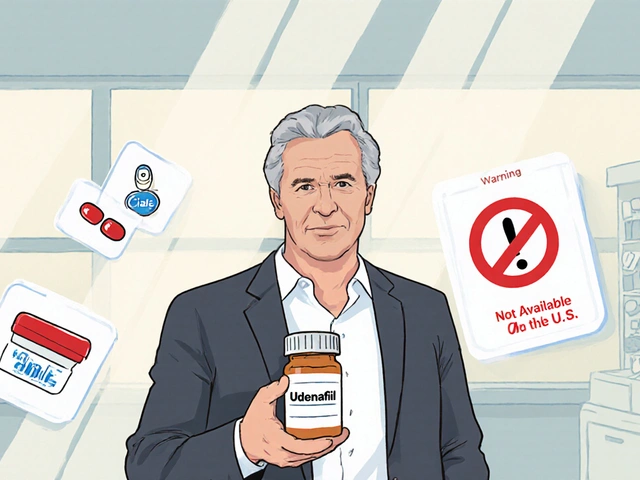You probably see new supplements touted online almost daily—most of them all hype, no substance. But when it comes to eicosapentaenoic acid (EPA for short), you’re looking at a heavyweight with real scientific muscle. Omega-3s are not just good PR—they’re one of the most researched nutrients on the planet. Think about it this way: you can’t scroll through nutrition advice without bumping into fish oil, and EPA is a key reason why doctors push you to eat more fatty fish or try those slightly fishy-smelling gels at the pharmacy. The crazy thing is, most people still have no clue what EPA actually does for their bodies, or why their burger-and-fries diet might need a little ocean power.
What Is Eicosapentaenoic Acid (EPA) and How Does It Work?
EPA is one of the three main omega-3 polyunsaturated fatty acids, along with DHA (docosahexaenoic acid) and ALA (alpha-linolenic acid). The big dogs are EPA and DHA; ALA comes from plants like flaxseed, but your body is embarrassingly bad at turning it into the stuff that really powers it—EPA and DHA. Back in 1971, researchers studying Greenland Inuit noticed they almost never got heart attacks, even though their diet was loaded with fat. The twist? Their fat came from fish and seals, not donuts. Eventually, scientists figured out that their blood was swimming with EPA and DHA.
Unlike saturated fats that jam up your arteries, EPA steps in as a peacekeeper in your cells. It’s built into the walls of every cell, but it truly shines when it comes to fighting inflammation. Every time you stub your toe or catch a cold, inflammation is the heat that helps your body fix things. EPA helps turn that heat off before it runs wild. It nudges your body to produce molecules called eicosanoids—a tongue-twister, but these little guys either cool off or stoke the flames of inflammation. With enough EPA, your body tends to make the “cool off” versions, which is why it’s linked to everything from quieter joints to calmer hearts.
But EPA isn’t just about putting out fires. It also affects how your blood flows, how your brain functions, and even how happy you feel. Think about your cell membranes. EPA actually makes them more flexible and responsive. If your cells are stiff as cardboard, nutrients and signals don’t move like they should. When you top up on EPA, you’re keeping your brain, eyes, and arteries nice and supple.
Data from the National Health and Nutrition Examination Survey (NHANES) in the U.S. shows most Americans eat only about 20-30 mg EPA per day—even though experts say hundreds of milligrams is ideal. That’s a huge gap. Just for context, 3 ounces of wild salmon packs around 400–700 mg EPA. Not a fish fan? That’s where supplements come into play.

Key Health Benefits and Potential Drawbacks of EPA Supplementation
Now for the part that really matters: why should you care about EPA? The most headline-grabbing benefit is heart health. A Japanese study with more than 18,000 people found that those taking 1,800 mg EPA daily saw a 19% drop in major heart-related problems. It’s rare to see numbers that solid outside of quitting smoking. Even the FDA lets supplement companies quietly mention that EPA “may reduce the risk of coronary heart disease”—a huge deal given how strict they are about claims.
EPA also stands out for its mood-boosting powers. Studies show people with depression or mood swings often have low omega-3 levels, especially EPA. One clinical trial at Massachusetts General Hospital showed people with major depression who took EPA (in pure form, not mixed with DHA) noticed meaningful improvements over just two months, often as much as prescription antidepressants—without the zombie side effects.
Let’s not leave athletes out. A 2021 randomized trial found that elite rugby players who took 1,600 mg EPA daily had lower markers of muscle soreness and bounced back faster after matches. EPA is even being studied to help manage ADHD-related symptoms, menstrual cramps, and dry eyes. It might not be a miracle pill, but if you want to turn down the volume on chronic aches or daily brain fog, EPA has real street cred.
But let’s keep it real: supplements are not all sunshine. Fish oil can sometimes cause burps, indigestion, or that weird taste that hangs around after you down a capsule. Some people with bleeding disorders need to watch out, because EPA can thin the blood and make bruising or nosebleeds more likely. Purity also matters—a 2018 ConsumerLab analysis found that 1 in 10 fish oil supplements on the market had more oxidation than is considered safe, and many had way less EPA than advertised. Cheap brands? Don’t expect them to source fish from pristine waters or test for heavy metals.
Here’s a quick breakdown of common omega-3 sources and their EPA content:
| Food/Supplement | Average EPA per 100g or dose (mg) |
|---|---|
| Wild Salmon (100g cooked) | 500–700 |
| Sardines (canned, 100g) | 400–600 |
| Mackerel (100g) | 500 |
| Fish Oil Capsule (1000mg) | 180 |
| Algal Oil Capsule (1000mg) | 100–300 |
| Flaxseed Oil (1000mg) | 0 |
If you eat fish twice a week and snack on sardines or salmon, you might not need to supplement. If you hate seafood, are vegetarian, or just want a sure thing, high-quality EPA capsules can make up the difference. Keep in mind: not all omega-3 supplements are the same. A label might boast “1000 mg fish oil,” but often only a fraction is actually EPA or DHA. Read the back, look for third-party testing badges, and aim for at least 500 mg EPA per day for general wellness. If you deal with health conditions like heart disease, your doctor may recommend much higher doses—but always get medical advice first if you’re taking blood thinners or managing a large health issue.

How to Choose, Take, and Maximize EPA—Real-World Tips
So how do you get the most out of EPA? First up, check your supplement. The best brands list exactly how much EPA and DHA you’re getting, per capsule or per serving. Look for transparency—molecularly distilled, sustainably sourced, and certified by groups like IFOS (International Fish Oil Standards) or the MSC (Marine Stewardship Council). If you can, open a capsule and take a sniff: it should not smell rank or fishy. That means it’s probably gone bad or started to oxidize, which isn’t healthy for you.
Figuring out the right dose is less complicated than math class. For maintenance or prevention, most expert panels recommend anywhere from 250 to 1000 mg combined EPA + DHA daily, with special focus on EPA for heart, brain, and mood support. If you’re tackling a specific issue—such as high triglycerides, rheumatoid arthritis, or clinical depression—studies often use EPA doses of 1000 to 4000 mg per day. But again, if you’re going high-dose, check with your healthcare provider, especially if you’re on blood thinners.
Timing matters less than you’d think, but here’s a pro tip: always take EPA supplements with food, preferably meals containing some fat. Your gut absorbs omega-3s up to three times better this way. If you’re on vegan or vegetarian diets, most algae-based omega-3s are richer in DHA but some advanced options have boosted EPA, so read those labels closely.
EPA can play nice with other nutrients too. If you’re looking to build a daily supplement stack, EPA stacks well with vitamin D and magnesium—two other nutrients most people are missing. Vitamin E helps keep fish oil fresh inside your body and inside the capsule. Avoid combining EPA with high doses of vitamin A (such as cod liver oil), which can, in excess, be toxic over time.
You don’t have to pop mega-doses to see benefits. Even small, regular intakes add up over weeks and months. One research review found that just 250 mg EPA+DHA daily slashed risk of death from heart attack by 25%. It’s not instant gratification, but it sure beats a lottery ticket.
One underrated angle: EPA isn’t only for humans. Growing numbers of pet owners and even veterinarians are giving EPA-rich fish oil to aging dogs and cats. Just double-check dosages and flavorings for safety before treating your furry roommate to your new supplement.
Here are some practical tips to finish strong:
- Buy reputable brands, ideally those tested by independent labs.
- Store bottles in a cool, dark place—refrigeration is best.
- If you experience digestive upset, try switching brands or splitting your dose.
- Track your results—some people notice better skin, mood, or muscle recovery after 1-2 months.
- If you’re pregnant, nursing, or managing a big health issue, talk to a healthcare pro first.
EPA isn’t magic and doesn’t turn junk food into health food, but it’s one supplement with decades of research and real benefits for the heart, joints, and brain. Whether you’re a runner, devoted desk jockey, or just want to feel sharper and move better as you age, EPA is worth a serious second look—and maybe a place on your shelf, just next to your morning coffee.


